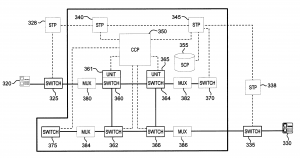 Drafting a patent application often involves describing the invention both broadly and in detail. But how can something be described both broadly and specifically?A decision in a case between Sprint and Time Warner Cable illustrates one way.
Drafting a patent application often involves describing the invention both broadly and in detail. But how can something be described both broadly and specifically?A decision in a case between Sprint and Time Warner Cable illustrates one way.
In that case, Time Warner argued that the patents asserted by Sprint did not comply with the written description requirement. It argued that the claims were broader than what was described in the patent description. Time Warner argued that the patent description was limited to ATM networks. The appeals court disagreed.
The patent description at issue in the case included reference to “[b]roadband systems, such as Asynchronous Transfer Mode (ATM).” The court said that this wording “strongly suggests that the patents are not limited to ATM technology.”
In the Sprint case, Time Warner accused technology did not use ATM technology but instead used IP technology. If the patents did not describe broadly “broadband systems” it is less likely that the claims would have been useful to cover Time Warner’s IP-based system.
The form of the phrasing is “[broad or general descriptor], such as [detailed or specific descriptors].” This form can allow claims to the broad element while also specifying specific details in the patent application. Multiple detailed elements can be listed. For example, “a wireless protocol, such as WiFi, CDMA, 3G, 4G, LTE…” or another example, “a fastener, such as a screw, bolt, nail, rivet, hook and loop fastener….”
By describing an invention feature broadly first and then providing detailed examples of the broad element in an exemplary way, the invention feature is described both broadly and in detail. Describing the invention feature broadly provides the opportunity for broad patent coverage. Providing detailed examples supports the broad description and provides a fall-back position if some portion of the broad subject matter is already in the prior art.
Case Citation: Sprint Communications Company LP v. Time Warner Cable, Inc., No. 2017-2247 (Fed. Cir. Nov. 30, 2018).